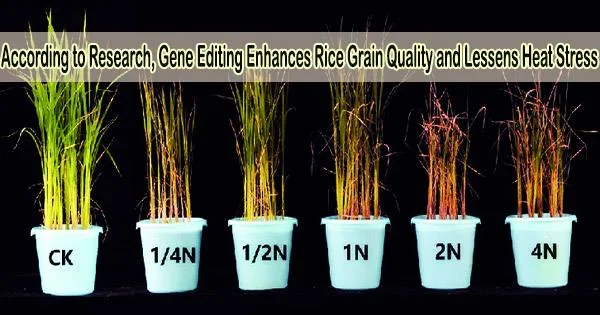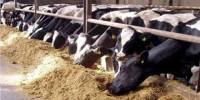Maintaining the quality and productivity of crops adapted to lower temperatures will become more and more difficult as global temperatures rise.
One crop whose ripening phase is known to be impacted by higher evening temperatures is rice, which can display a condition known as “chalkiness” owing to heat stress.
When the starch concentration is low, the rice granules become less compact and exhibit chalkiness. This can result in lower milling yields, cooking quality and overall market value.
A paper published in Plant Journal by researchers at the University of Arkansas and the University of Arkansas System Division of Agriculture, or UADA, may offer a remedy to both heat-induced and genetic chalkiness.
The paper, “Targeted mutagenesis of the vacuolar H+ translocating pyrophosphatase gene reduces grain chalkiness in rice,” details how the team was able to gene edit a strain of japonica rice to reduce chalkiness.
If we want to sustain life on our planet, it is really important to identify solutions to problems in our food systems that are coming with increasing average temperatures. We were really excited to share our findings that utilized gene-editing in rice to improve grain quality that remains consistent even under heat stress.
Peter James Icalia Gann
The researchers specifically targeted a gene that encodes the vacuolar H+ translocating pyrophosphatase (V-PPase), an enzyme known to play a role in increasing grain chalkiness. The team reduced the expression of V-PPase by editing a promoter element, which regulates how much of it is expressed, using CRISPR-Cas9 gene-editing technology.
Depending on the strain of rice, the altered rice lines led to a seven to 15-fold reduction in chalkiness and an increase in grain weight. Even with the overnight temperature increase, the results remained stable.
Overall, more compact packing of starch granules and formation of translucent (as opposed to chalky) rice grain, showing a clear improvement in rice quality, characterized the mutated lines.
The process was novel enough that the paper’s first author, Peter James Icalia Gann, a Fulbright Scholar in the Cell and Molecular Biology Program, and co-author, Vibha Srivastava, a professor in the Department of Crop, Soil and Environmental Sciences who has a joint appointment with the U of A and the UADA, filed for a provisional patent.
“If we want to sustain life on our planet, it is really important to identify solutions to problems in our food systems that are coming with increasing average temperatures,” Gann said. “We were really excited to share our findings that utilized gene-editing in rice to improve grain quality that remains consistent even under heat stress.”
















